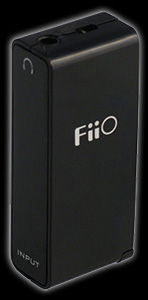
How do I reduce preamp noise on the Nikon D800/D800E?

If you use an external microphone plugged into the D800/D800E you may have experienced a very audible continuous hissing noise in the recorded sound. This caused by the built in sound amplifier, called an amp or preamp.
Microphone membranes only generate a very weak electric signal, which needs to be amplified to a usable volume. Some more expensive microphones have an amplifier built in but most do not. If you plug in an external microphone without a built in amplifier, the signal will need to be amplified to a usable volume. Fortunately, the D800 has a preamp built in to do this for you. The preamp can be set to 'auto' (automatic gain control or agc) or manually adjusted from '1..20'. Unfortunately, the quality of the preamp is rather low, creating a lot of preamp noise. This is real shortcoming in an expensive camera like the D800. For instance, is you use the ATR-3350 lav mic, you need a preamp setting of about 15, which creates a very audible preamp noise.
To be able to turn down the preamp to about 5, which eliminates most of the hiss noise, you need to amplify the microphone signal before feeding it to the D800. If you have microphone with built in amplifier (called an active mic, like some Rode models), turn it up until the sound it loud enough in the video.
If you have a non-amplified microphone you need to find an amplifier. You could use a dedicated microphone amplifier that could get costly, but other people had success using a cheap headphone amplifier (like the $8 Fiio E3 or the better sounding $30 Fiio E5 or Fiio E6). You could also use a laptop: plug the microphone into the laptop, enable mic monitoring in the laptop and connect the headphone output of the laptop to the D800's microphone input. Start at a low headphone volume on the laptop to prevent blowing up the D800's circuits and increase the volume while monitoring the mic levels on the D800's display. Use at your own risk and you mileage may vary.
Strange enough, the built in microphone doesn't appear to have a lot of noise, while it seems logical that it would use the same amplifier circuitry. There could be some dedicated noise reduction going on, tailored to that specific microphone. I you know more, please let me know.
Trick: Record a couple of second of silence with your shoot, capturing only the noise of the scene and your equipment. You can use this noise sample in post production to create a noise profile in your editing software and remove most of the unwanted noise.
Related questions:
- Should I use a stereo or mono microphone with the D800/D800E?
- What is the best external microphone for the D800/D800E?
- How do I prevent autofocus and handling noise to be picked up by the microphone?
Or go to the index of all Nikon D800 video questions.

